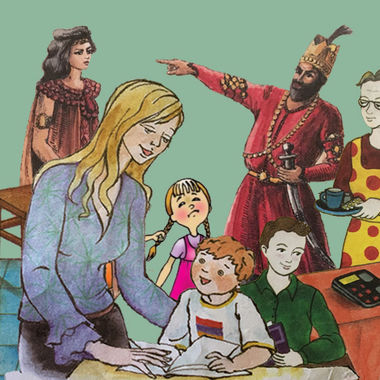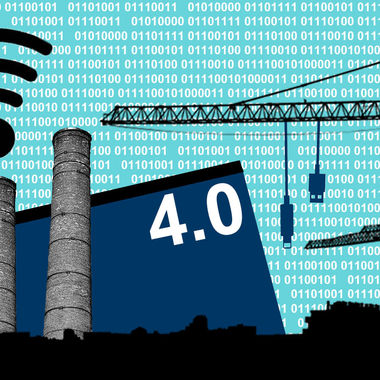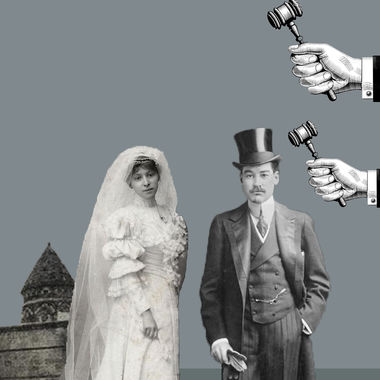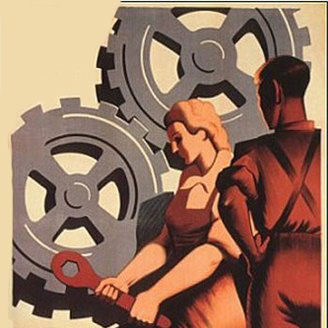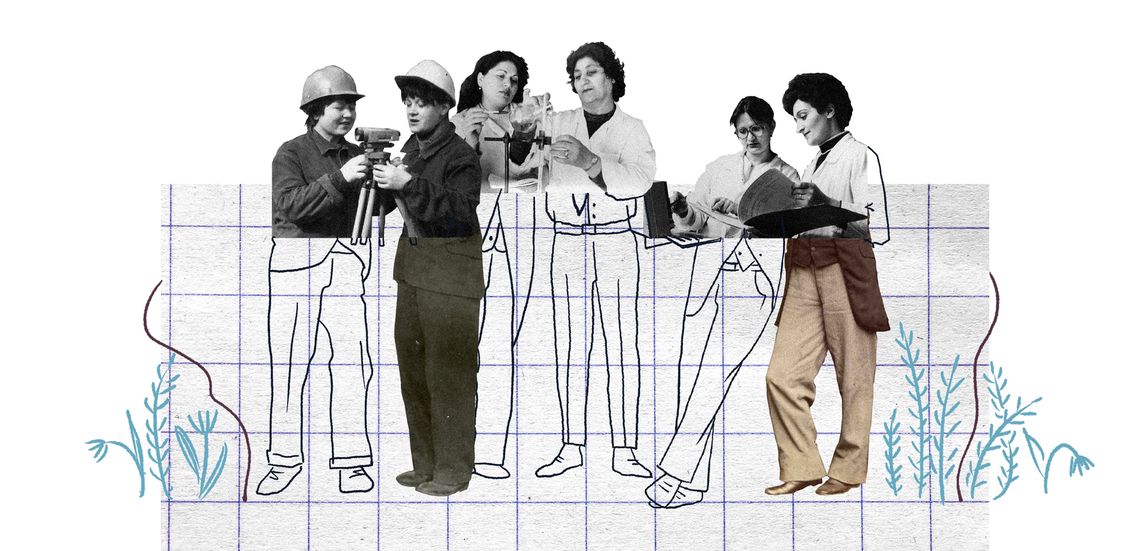
Illustration by Armine Shahbazyan.
Armenia is among a handful of countries that designates International Women’s Day (IWD) as a public non-working holiday to celebrate the social, economic, cultural and political achievements of women, as well as to highlight the inequalities women continue to face in the workplace and society.
History of IWD
Each year, IWD has a theme. This year, it was #ChoosetoChallenge – which looks to celebrate women’s achievement, raise awareness against gender bias and take action for equality. The first IWD was acknowledged in the U.S. in 1909 when 15,000 female workers went on strike in New York City to demand improved working conditions, shorter working hours and voting rights. The following year, the Socialist Party of America announced a National Women’s Day to honor the workers. The first official IWD was held in 1911, when Austria, Denmark, Germany and Switzerland became among the first countries outside the U.S. to mark the day. In 1917, Russian women staged a strike for “Bread and Peace” (with bread symbolizing economic security and roses for better living standards). This strike led to them being granted the right to vote. IWD was celebrated for the first time by the United Nations (UN) in 1975. In December 1977, the UN General Assembly adopted a resolution proclaiming a United Nations Day for Women’s Rights and International Peace to be observed on any day of the year by Member States, in accordance with their historical and national traditions.
More than a century has passed since the day was first celebrated, but despite significant efforts aimed at ensuring gender equality in various fields, the female workforce still struggles with a gender pay gap.
Gender Pay Gap
The gender pay gap is the difference between the hourly wages earned by men and women in the labor market, expressed as a percentage of men’s average wage. Women are generally considered to be paid less than men. There are two distinct numbers regarding the pay gap: unadjusted versus adjusted pay gap. The latter takes into account factors that contribute to the gap, such as differences in education, job experience, hours worked and type of occupation.
UN Women Georgia, in partnership with the National Statistical Committee of Armenia (ArmStat), has concluded a study with the objective of calculating the adjusted gender pay gap and the associated economic inequalities of women in Armenia’s labor market. The study is based on the Labor Force Survey of 2018.
The employment rate in Armenia is 44.8% for individuals aged 15–64. Women experience a 11.1 percentage point (p.p.) employment gap. The employment rate is the lowest for the youth, with a gender employment gap less than half that of the overall population, while the rates for the other age cohorts are similar. The gender employment gap is the largest for the 35–44 and 55–64 age cohorts. The gender unemployment gap largely exists for the younger labor force (aged 15–34), while the gender inactivity gap stands at 6–37.4 p.p., hence sizable. It is apparent at any age.
In 2019, the length of the job search process of almost one unemployed out of two (48%) was one and more years, considered long-term unemployment (LTU). The LTU rate is especially high among women, reaching 54% of the unemployed female population. Men constitute 43% of the LTU.
Women are slightly more represented in agriculture, which confirms their larger share as unpaid family workers. Mining and especially construction, on the one hand, are traditionally more “masculine” sectors, as well as public administration. On the other hand, education and health and social care are dominated by women. Men occupy more managerial positions than women, which may be an early sign of the glass ceiling effect, despite the fact that women dominate the next three skill levels (i.e. professionals, technicians and associate professionals, and clerical support workers).
The unadjusted gap calculated on monthly wages is 40%. However, that figure includes the gender pay gap and the gender gap in hours worked. Armenian women are found to work less than men by about 14.3%; therefore, the unadjusted gender pay gap calculated on hourly wages - constituting 23.1% - is smaller in comparison with the monthly gender pay gap.
The adjusted gender pay gap in Armenia is estimated at 28.4%. It is actually larger than the unadjusted gender pay gap, suggesting that working women have better labor market characteristics than men. This also relates to women’s potentially more positive selection into the labor market, despite the fact that non-working women (unemployed and inactive) also do possess considerable levels of education. Therefore, a difference in qualifications cannot explain the gender pay gap in Armenia; quite the contrary, it amplifies it. The addition of sectors and occupations does not affect the resultant gap, suggesting that potential sectoral and/or occupational segregations likewise cannot explain the gap.
The adjusted gender pay gap, taking into account selectivity (e.g. that more-educated women tend to have more opportunities to find a job), in Armenia is estimated at about 10%. It suggests that, once we control for characteristics and selectivity, the gap declines at this level. Hence, this is a residual gender pay gap that could be ascribed to labor market discrimination and unobservable factors. The distributional analysis showed that the gender pay gap in Armenia does not vary along the wage distribution. However, a potential glass ceiling effect was identified: the top 1% of earners face an adjusted gender pay gap of around 19%, which is almost double the average. Women work fewer hours than men, and such differences are spread among ages, occupations and economic status. However, women spend comparatively more time than men engaged in household chores, including caring for children and sick, elderly and disabled family members. Mothers in couples are most prone to low employment incidents and large gender employment gaps, especially at a young (childbearing) age. Results find evidence for horizontal gender segregation, as at least three quarters of women and men employees would need to trade places across the job categories for their distribution to become identical. Vertical segregation is quite forceful as well.
Government Commitment to Full Employment
Armenia’s Law on Employment states that employment is regulated by the Constitution, the Civil Code, the Labor Code, the Law on the Minimum Monthly Wage and other legislative acts, as well as international treaties to which Armenia is a party. Armenia ratified the International Labor Organization (ILO) Convention No. 100 – Equal Remuneration Convention (1951) in 1994. Article 2 of the convention states: “Each Member shall, by means appropriate to the methods in operation for determining rates of remuneration, promote and, in so far as is consistent with such methods, ensure the application to all workers of the principle of equal remuneration for men and women workers for work of equal value.”
The principle of equal pay for men and women for full-time work is already fully implemented in the Labor Code; Article 3 of the code guarantees the legal equality of parties to labor relations, fair working conditions, equality of rights and opportunities for workers, and timely and full remuneration of employees at a rate not less than the minimum wage defined by the law. Article 178 regulates wages and stipulates that men and women are to receive “equal pay for the same or equivalent work.”
Article 6 of the Law on Guaranteeing Equal Rights and Equal Opportunities for Women and Men states “Direct and indirect gender discrimination is prohibited in all spheres of private and public life.” The same article defines both the forms of direct and indirect gender discrimination, and the features of gender-based treatment that are not considered gender discrimination. Different remuneration for equal or equivalent work, any change in wage (increase or decrease) or deterioration of working conditions on the basis of gender is defined as a direct form of gender discrimination.
The Decent Work Country Programme (DWCP) for 2019-2023 was developed and signed on May 14, 2019 by the Armenian tripartite constituents (the government, employers’ organizations and workers’ organizations) and other national stakeholders. The DWCP defines the priorities of cooperation between Armenia and the ILO, the main outcomes and the implementation strategies for five years. The Programme aims to further develop mechanisms of regulating labor relations, improve employment policy and enhance employability of women and men, and to strengthen social dialogue.
Despite the fact that many sectoral programs are being implemented, gender inequality exists in all spheres of public life. The implementation of gender-sensitive budgeting is aimed at ensuring a balanced distribution of resources and opportunities. In this regard, in the framework of public budget management policy reforms in Armenia, elements of gender-sensitive budgeting have already been fully introduced in the process of elaborating the state budget, making the state budget gender-sensitive, which will help to reduce gender gaps in all spheres of public life.
Recommendations to Close the Gap
-
Introduce or develop policies to reduce the gender pay gap (e.g. a properly set binding minimum wage may increase wages in sectors largely populated by women, support a gender-balanced approach and expand care facilities and parental leave opportunities).
-
Encourage female participation in management and decision-making positions. A hallmark way to do this is to prescribe gender quotas for corporate boards by law.
-
Fight gender-based discrimination in the labor market by designing policies to ensure equal access to employment and income opportunities.
-
Address the behavioral and structural barriers limiting women’s access to work through awareness-raising campaigns, and establishing or strengthening institutional bodies (e.g. an anti-discrimination agency) to combat discrimination.
-
Promote skill development programs for women in low wage activities.
-
Incorporate a women’s economic empowerment lens in the development of skills and professional training programs for women in non-traditional sectors such as information technology (IT), financial management, transportation, logistics, etc.
A Man’s World? Gender Stereotypes and Underrepresentation of Women in Textbooks
By Gayane Ghazaryan
A close examination of Armenian public school textbooks reveals persistent gender bias and stereotyping at almost all grade levels.
The Need for Gender Equality in the Labor Market
By Sona Martirosyan
Striving for gender equality in the labor market is essential to maximizing Armenia’s economic potential.
The Fourth Industrial Revolution: Challenges in the Labor Market and Education
By Ani Avetisyan
Global trends demand new requirements in education and labor markets. To remain competitive, a country has to embark on creating, developing and implementing innovation while focusing, more than ever, on the development of a knowledge-based economy and pushing research and development forward. How will Armenia fare?
Marriage Law and Culture: Ottoman Armenians and Women's Efforts for Reform
By Hasmik Khalapyan
Although Armenian women did not directly participate in the public discourse on the family structure and institution of marriage during the 19th to early 20th centuries in the Ottoman Empire, they articulated their concerns against gender inequalities through the voices of the fictional characters they created in their writings.
Sex vs. Gender Through Linguistic Expression in Armenian
By Rafik Santrosyan
From referencing the issue of sex-selective abortions to drinking toasts in honor of women, the grammatically genderless Armenian language, still fails to provide a space for its speakers to develop sensitivity towards the intricacies of gender as social conventions and cultural constructs. Rafik Santrosyan, PhD in Linguistics, explains how.
Feministivals: Purity Through Parity
By Karen Avetisyan
This year, more than 60 percent of submissions to the Golden Apricot Film Festival (GAIFF) feature women directors, while the global average of female directors is a dismal 7 percent. GAIFF has organically found itself in a situation many European film festivals and international organizations dream of being in, writes Karen Avetisyan.


